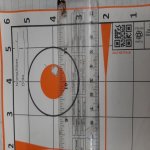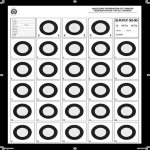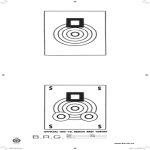What is the proper way to measure group size? I used to measure center to center but I read somewhere you should measure outside spread and subtract the bullet diameter. This seems to work for me except for the following example:

This is the best group I've ever shot. This is a 5 shot group at 50 yds. CZ 452 Varmint (stock) Eley Standard (Yellow) off bags. I shot 4 5 shot groups and the other 3 were all around 3/8". I have an At-One as well and it's a very fine shooting rifle as well. TC

This is the best group I've ever shot. This is a 5 shot group at 50 yds. CZ 452 Varmint (stock) Eley Standard (Yellow) off bags. I shot 4 5 shot groups and the other 3 were all around 3/8". I have an At-One as well and it's a very fine shooting rifle as well. TC












































































